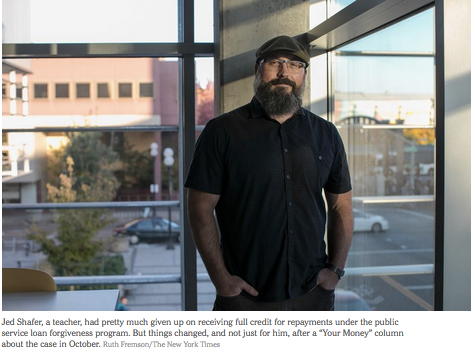In October, I wrote a column about Jed Shafer, a teacher in Oregon who found himself on the wrong end of the student loan repayment bureaucracy.
Mr. Shafer thought he was following the rules to qualify for the public service loan forgiveness program, and spent years communicating carefully with the loan servicers who collected his payments on behalf of the federal government. But it turns out he hadn’t been doing it correctly after all.
The result? He learned he was going to have to pay tens of thousands of dollars extra. After many months of pleading his case to his loan servicer and the Department of Education, he’d pretty much given up.
“They have the power, regardless of my service and full payments, to make me look inept,” he told me then. “They will surely win based on their documentation.”
Well, they didn’t win. Mr. Shafer recently received official word that seven years of payments that he was told would not count toward his loan forgiveness — he needed 10 years — would count after all. Moreover, the $1.3 trillion spending plan that Congress passed last week contains a $350 million forgiveness fix-it fund to help some others like him.




